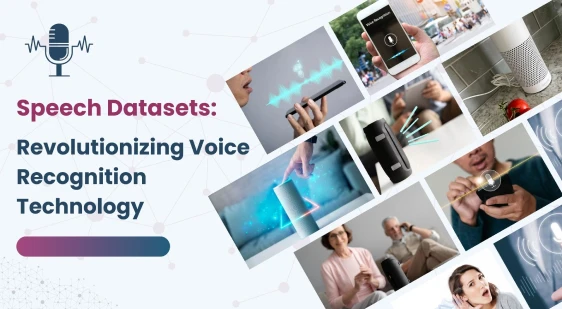Voice recognition technology has become an indispensable part of our daily lives. From virtual assistants like Siri and Alexa to speech-to-text applications and language translation services. Behind the scenes of these remarkable advancements lies a crucial component: speech datasets. These datasets serve as the foundation upon which voice recognition systems are built, enabling them to understand and interpret human speech accurately. In this blog post, we’ll explore the significance of revolutionizing voice recognition technology.
What Are Speech Datasets?
Speech datasets are collections of audio recordings paired with transcriptions or annotations that represent the spoken content of the recordings. These datasets come in various sizes and languages, ranging from small, specialized sets to large, diverse corpora. Each dataset is meticulously curated to encompass a wide range of accents, languages, and speaking styles, ensuring robustness and accuracy in voice recognition systems.
The Role of Speech Datasets in Training AI Models
This play a crucial role in training artificial intelligence (AI) models for speech recognition tasks. By exposing these models to diverse speech patterns and linguistic variations, speech datasets enable them to learn the intricacies of human language and develop the ability to accurately transcribe spoken words into text. Moreover, continuous updates and expansions of speech datasets help AI models stay relevant in an ever-evolving linguistic landscape.
Challenges and Considerations
While speech datasets have significantly advanced voice recognition technology, they also pose several challenges. One of the primary challenges is ensuring diversity and representativeness within the datasets. Biases in data collection can lead to disparities in performance across different demographic groups, emphasizing the importance of inclusive dataset-creation processes. Additionally, maintaining data privacy and security is paramount, as speech datasets may contain sensitive information about individuals.
Applications
The applications of speech datasets extend far beyond virtual assistants and speech-to-text applications. They are instrumental in various fields, including:
- Accessibility: power assistive technologies for individuals with disabilities, such as voice-controlled devices and speech-to-text software.
- Healthcare: In the healthcare sector, facilitate the development of voice-based diagnostic tools and assistive technologies for patients with speech disorders.
- Language Learning: Language learners benefit through pronunciation practice tools and language learning applications that utilize speech recognition technology.
- Security: Speech datasets contribute to the development of voice biometrics systems for identity verification and authentication purposes, enhancing security measures in various industries.
The Future of Voice Recognition Technology
As continues to evolve and expand, the future of voice recognition technology looks promising. Advances in machine learning algorithms, coupled with increasingly diverse and extensive speech datasets, will lead to even greater accuracy and functionality in voice-enabled systems. Moreover, ongoing efforts to address biases and enhance data privacy will ensure that voice recognition technology remains ethical and inclusive.
Conclusion
It represent the backbone of voice recognition technology, driving innovation and enabling seamless interactions between humans and machines. By harnessing the power of diverse and representative datasets, AI models can better understand and interpret human speech, opening doors to a myriad of applications across industries. As we look ahead, the continued advancement will undoubtedly fuel the evolution of voice recognition technology, transforming the way we interact with technology and each other.







